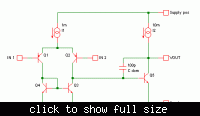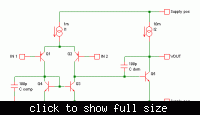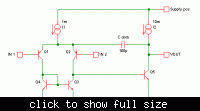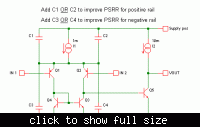emeraude
Junior Member level 2
- Joined
- Mar 2, 2011
- Messages
- 22
- Helped
- 1
- Reputation
- 2
- Reaction score
- 1
- Trophy points
- 1,283
- Location
- Philippines
- Activity points
- 1,458
Hi! I'm designing a two-stage op-amp and aiming for a 60dB PSRR at 1MHz. Im using simple differential pair for the 1st stage and cascoded common-source at the 2nd stage, and i'm only getting <20dB at 1MHz. What can I do to achieve the 60dB at 1MHZ? Should i change my architecture? But im only limited to two-stage opamp architecture since its what i proposed... By the way, im using tsmc 0.18um technology with 3.3V Vdd... Hope you can help me in this project..Thanks.



